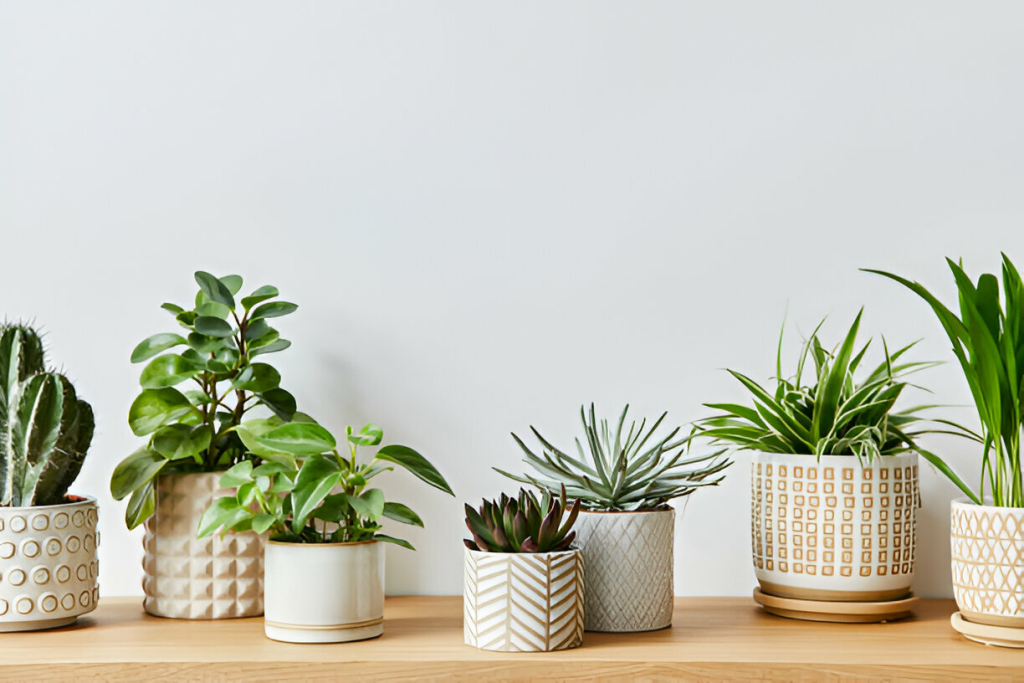How To Take Care Of Your Home Decor Plants
4 min read
plants for home decor
Decorating your home with plants is a wonderful way to bring nature indoors, add a splash of colour, and even purify the air. However, for many beginners, caring for these green friends can be a bit daunting. This guide will help you understand the basics of plant care, ensuring your home decor plants thrive and enhance your living space.
Choosing the Right Plants
The first step in caring for plants for home decor is selecting the right ones. Not all plants are created equal; some require more attention and specific conditions than others. For beginners, starting with low-maintenance plants like snake plants, pothos, or ZZ plants is best. These plants are resilient and can tolerate a variety of indoor conditions. When choosing plants, consider the lighting in your home, as different plants have varying light requirements. Plants like succulents and cacti need lots of sunlight, while others like the peace lily thrive in low light.
Understanding Light Requirements
Light is crucial for plant health as it is essential for photosynthesis. Most indoor plants require bright, indirect light. This means they should be placed near windows but not in direct sunlight, which can scorch their leaves. Consider using artificial grow lights if your home doesn’t get enough natural light. These lights mimic the sun’s spectrum and provide the necessary light for plants to grow. Observe your plants regularly; if they look leggy or their leaves turn yellow, they might need more light.
Watering Wisely
Watering is where many new plant owners make mistakes. Overwatering can be just as harmful as underwatering. The key is to understand the specific water needs of each plant. Most indoor plants prefer their soil to dry out between waterings. A good rule of thumb is to stick your finger about an inch into the soil; if it feels dry, it’s time to water. Always use room temperature water and ensure your pots have drainage holes to prevent water from sitting at the bottom, which can cause root rot. Plants like succulents and cacti require less frequent watering, while ferns and peace lilies need more consistent moisture.
Providing Proper Humidity
Indoor plants, especially tropical varieties, often require higher humidity levels than typically found in homes. If you notice brown leaf tips or edges, your plant might need more humidity. Increase humidity by misting the plants with water, placing a humidifier nearby, or setting the plants on a tray filled with water and pebbles. Grouping plants can also create a micro-habitat with higher humidity. Be careful not to overdo it, as too much moisture can lead to mould and mildew problems.
Fertilising for Growth
Fertilising your plants provides essential nutrients they might not get from the soil alone. Use a balanced, water-soluble fertiliser, typically spring and summer, during the growing season. Follow the instructions on the fertiliser package for the correct dosage and frequency. Over-fertilizing can damage your plants, causing leaf burn and stunted growth. For most indoor plants, fertilising once a month during the growing season is sufficient. You can reduce or stop fertilising when plant growth slows down in fall and winter.
Repotting and Pruning
As your plants grow, they may outgrow their pots and need repotting. Signs that a plant needs repotting include roots growing out of the drainage holes, water sitting on the soil’s surface, or the plant becoming top-heavy. When repotting, choose a pot one size larger than the current one and use a fresh potting mix. Pruning is also crucial for maintaining plant health and appearance. Remove dead or yellowing leaves, and trim any leggy growth to encourage a fuller, bushier plant. Pruning also helps prevent diseases and pest infestations.
Monitoring for Pests and Diseases
Indoor plants sometimes attract pests like spider mites, aphids, and mealybugs. Regularly inspect your plants for signs of pests, such as tiny webs, sticky residue, or small insects. If you notice any pests, isolate the affected plant to prevent them from spreading to others. You can remove pests with a strong jet of water or by wiping the leaves with water and mild soap. Ensure proper watering and air circulation for diseases like root rot or leaf spot. If a plant is severely affected, it might be best to discard it to protect the rest of your collection.
By following these simple guidelines, you can ensure that your home decor plants stay healthy and vibrant. Remember that each plant is unique and may require slightly different care. Observe your plants regularly, and don’t be afraid to adjust based on their needs. Happy gardening!




